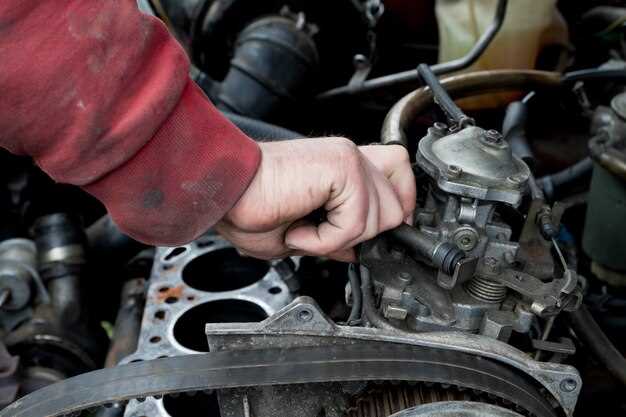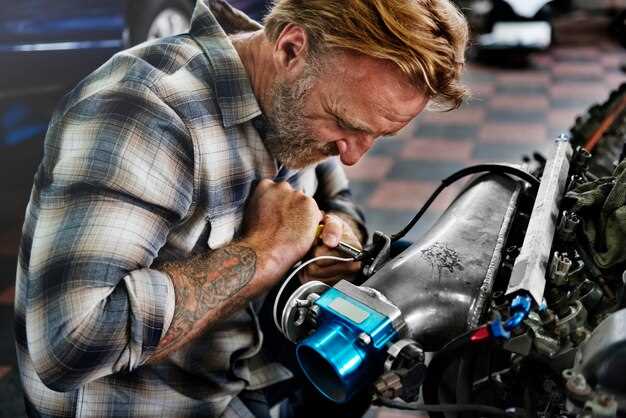
Tuning a carbureted Japanese engine can be both an art and a science. The carburetor, being the heart of the fuel system in these engines, plays a crucial role in managing fuel-air mixtures, which directly affects performance and efficiency. Understanding how to optimize this component is essential for any enthusiast looking to maximize their vehicle’s potential.
One of the first steps in tuning your carburetor involves selecting the right jetting. The jets control the amount of fuel entering the engine, and incorrect sizing can lead to richness or leanness in the air-fuel mixture. Finding the right balance is key – too much fuel can cause poor throttle response, while too little fuel may result in engine knock and reduced power.
Additionally, proper adjustment of the float level in the carburetor is critical. This adjustment ensures that the carburetor bowl maintains an optimal fuel level, allowing for consistent performance under various driving conditions. Taking the time to learn the specifics of your carburetor, including its tuning specifications, will pay off significantly in the long run.
It’s also important to consider the impact of airflow on carbureted setups. Upgrading the air filter and intake manifold can substantially enhance the engine’s ability to breathe. Improved airflow allows for a more efficient combustion process, translating into better performance and responsiveness.
Selecting the Right Carburetor for Your Engine

Choosing the correct carburetor is crucial for achieving optimal tuning and performance in carbureted Japanese engines. Several factors come into play when selecting the right carburetor, including engine size, intended use, and power goals.
Engine Size: The displacement of your engine plays a significant role in carburetor selection. A small engine typically requires a smaller carburetor, while a larger engine benefits from increased airflow. As a general rule, measure the engine’s cubic capacity and consult manufacturer recommendations to determine the appropriate carburetor size.
Type of Carburetor: There are various types of carburetors, including single-barrel, dual-barrel, and multiple-barrel designs. Single-barrel carburetors are often suitable for smaller engines, providing adequate performance without excess complexity. Dual-barrel and multi-barrel carburetors, on the other hand, are ideal for high-performance builds, allowing for better fuel atomization and increased horsepower.
Intended Use: Consider how you plan to use your engine. If it’s for daily driving, a carburetor with smooth throttle response and good fuel economy is essential. For racing applications, opt for a carburetor that delivers high flow rates and fine-tuning capabilities. The right choice will directly impact tuning adjustments and overall vehicle performance.
Adjustability: Select a carburetor with features that facilitate easy tuning. Adjustable jets, power valves, and interchangeable venturi sizes allow for quick modifications as tuning needs evolve. This flexibility can enhance performance across different driving conditions.
Brand Reputation and Support: Finally, consider the brand reputation and the availability of support. Choosing a well-established manufacturer can provide access to valuable resources, tuning guides, and expert advice. This support can be instrumental in achieving the best tuning results tailored to your specific engine setup.
In summary, selecting the right carburetor involves understanding your engine’s characteristics and your performance goals. Make informed decisions based on engine displacement, carburetor type, intended usage, adjustability, and brand reputation to maximize your tuning potential.
Adjusting Idle Speed and Throttle Response for Better Driveability

Achieving optimal driveability in carbureted Japanese engines largely depends on properly adjusting the idle speed and throttle response. These adjustments not only enhance performance but also improve fuel efficiency and overall engine responsiveness.
Idle Speed Adjustment
The idle speed is crucial for smooth engine operation when the vehicle is stationary. To adjust the idle speed, locate the idle speed screw on the carburetor. Start the engine and let it warm up to operating temperature, as the idle speed can vary based on engine temperature. Use a tachometer to measure the RPM and adjust the idle speed screw until you reach the manufacturer’s specified RPM range. A typical idle speed ranges between 600 to 900 RPM, but checking specific guidelines for your engine model is essential.
Throttle Response Improvement
A responsive throttle enhances acceleration and driving comfort. To improve throttle response, begin by inspecting the throttle linkage and ensuring it moves freely without any binding or excessive play. Lubricate if necessary. Next, adjust the mixture settings of the carburetor, ensuring it’s neither too rich nor too lean, as an improper mixture can lead to poor throttle response. A well-tuned air-fuel mixture will allow the engine to respond more quickly when the throttle is applied.
Testing and Fine-Tuning
Once adjustments are made, take the vehicle for a test drive. Pay attention to how the engine responds at various RPMs, particularly during acceleration and deceleration. If there are still issues with engine performance, consider re-evaluating the adjustments, and make incremental changes as needed. Each engine is unique, and minor tweaks can lead to significant improvements in driveability.
By focusing on proper idle speed and enhancing throttle response, you can significantly improve the overall performance of carbureted Japanese engines, ensuring a more enjoyable driving experience.




